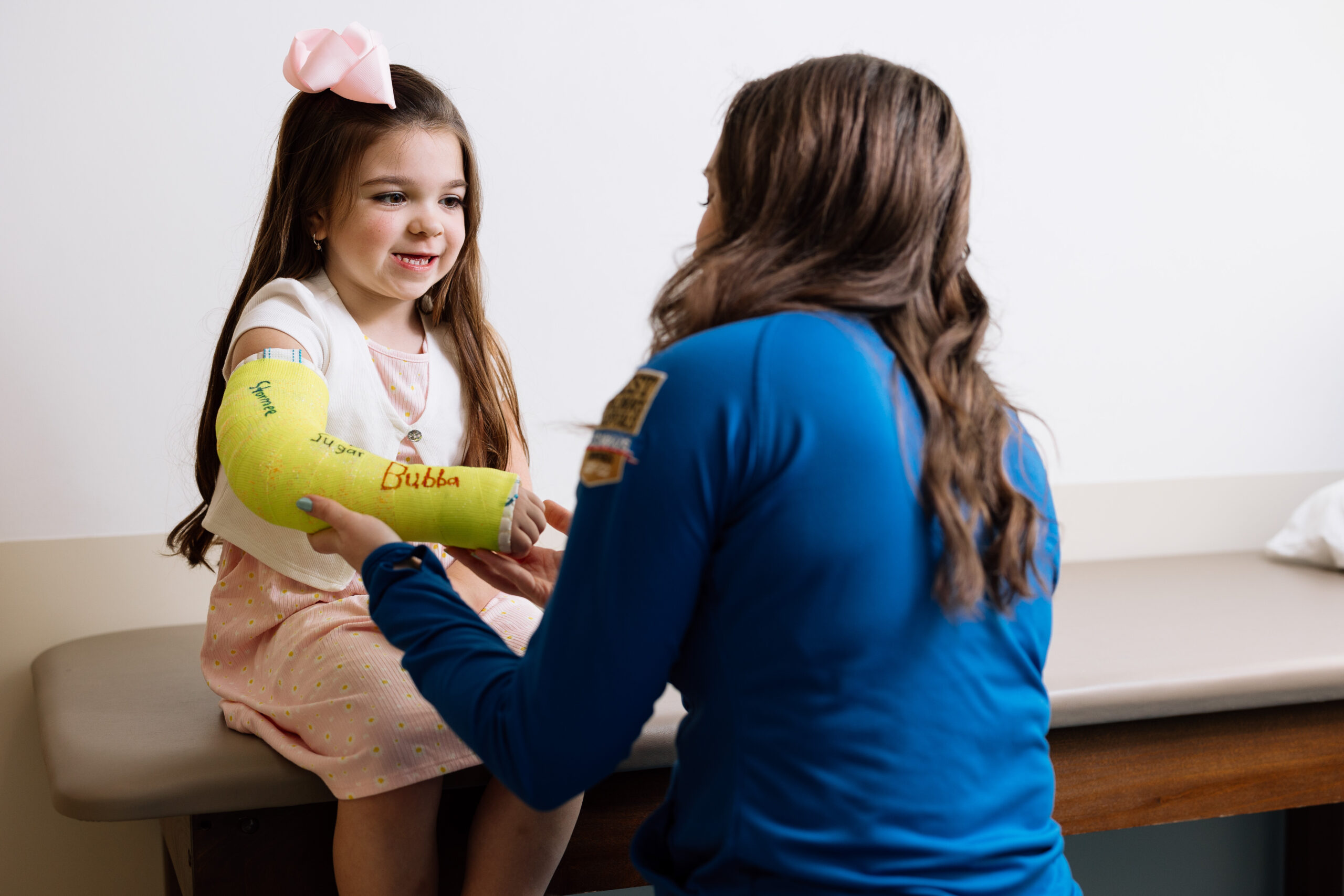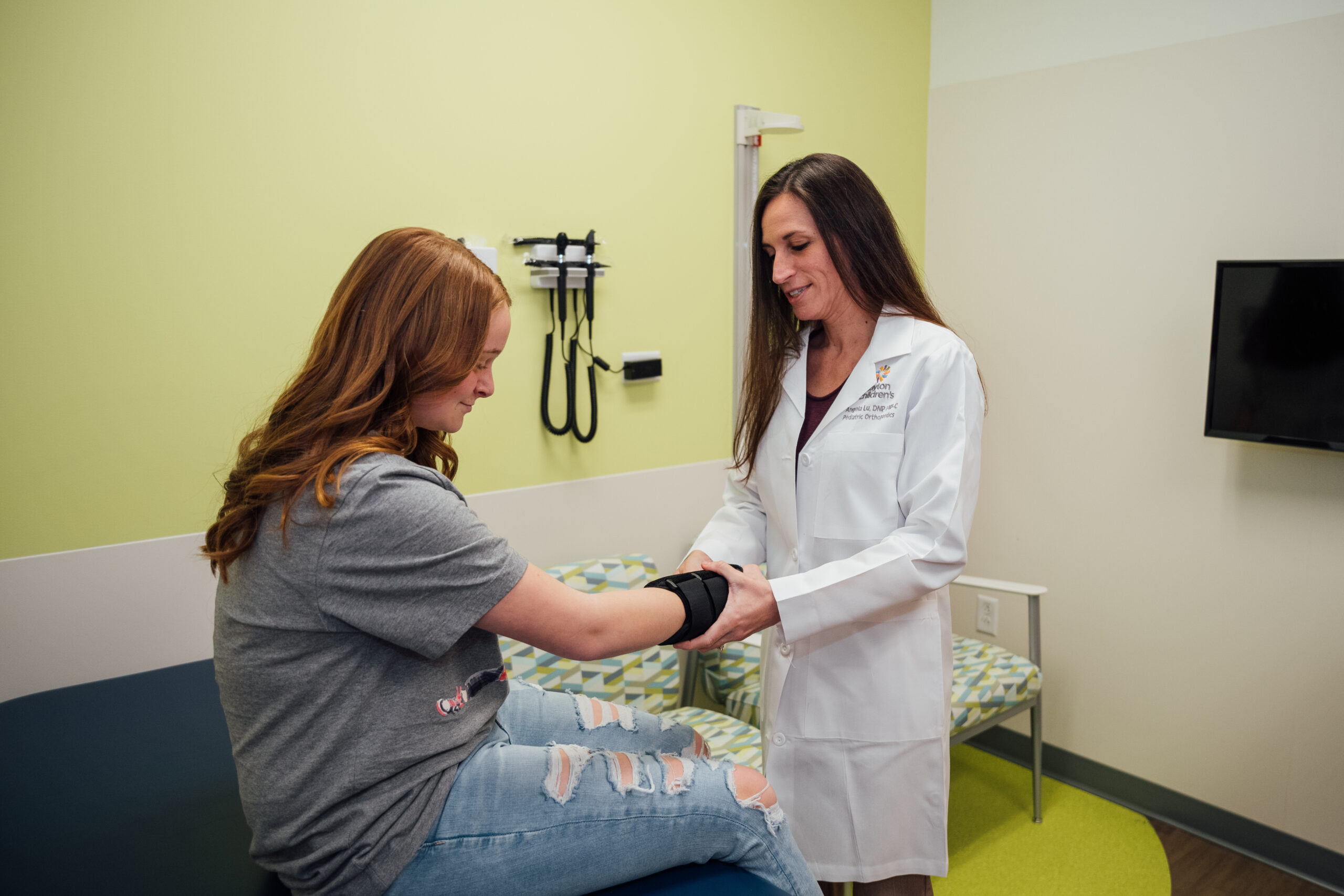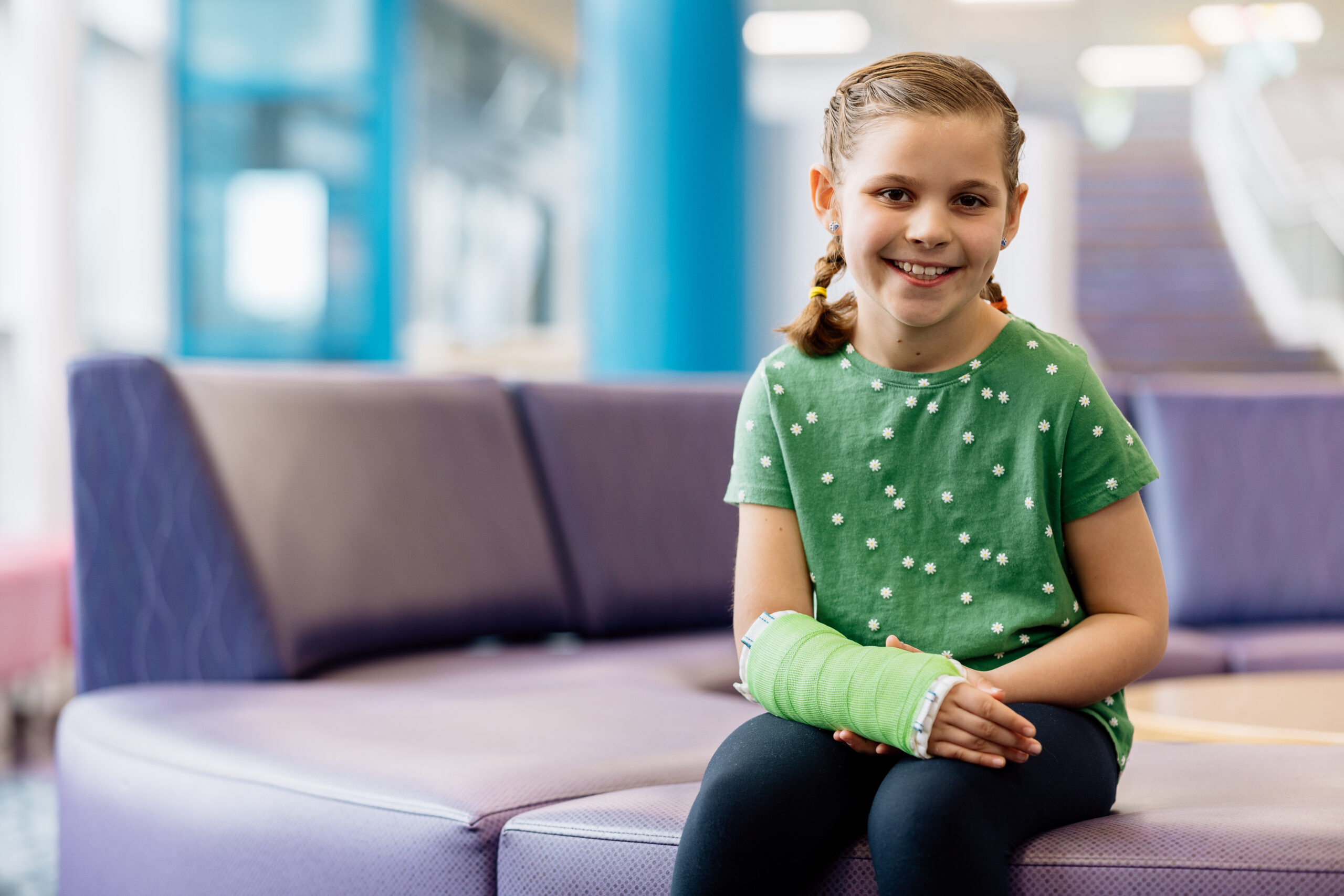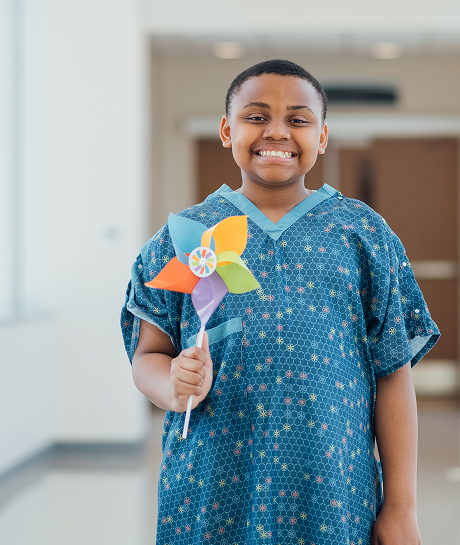signs of a fracture in kids
If you’re reading this, it’s likely you have a child that you suspect may have a fracture. We know this can be stressful. We’re here to help!


about condition
From injuries on the playground to the soccer field, many kids will have a broken bone at some point during childhood. When your child is injured, we know that it can be overwhelming to know when and where to go for care.
We recognize that what matters to you and your family is quick access to specialized care and Dayton Children’s is committed to delivering just that for fracture patients.
4 signs your child has a fracture
Knowing the signs and symptoms of a fracture will help determine when and where to take your child for care. Here are some common signs of a fracture:
- Hearing a snap or grinding noise when they got hurt.
- Swelling, bruising, or tenderness where it hurts.
- Pain when they move, touch, or press on the area, or if they can’t put weight on it, especially if it’s a leg.
- The area looks bent or wrong, and in really bad breaks, you might see the bone poking through the skin.
what is a fracture?
Fractures or broken bones are injuries that occur when a bone is subjected to more force than it can handle, resulting in a crack or break. Children are particularly prone to fractures due to their active lifestyle, participation in sports and adventurous nature. Fractures in pediatric patients require special attention because children’s bones are still growing and have unique considerations, like growth plates, compared to adults.


where to go if you think your child has a fracture
Depending on the day and time, your family has several options when seeking care for a suspected fracture:
Urgent or emergency care
- Depending on severity of the injury, the emergency department or urgent care may be the best place for care. They can help manage your child’s pain and provide them with the appropriate durable medical equipment to manage their fracture. To determine the location nearest you, visit:
Dayton Children’s Orthopedics
- You do not need a referral to schedule directly with one of our pediatric orthopedic specialists. Choose from one of the following options:
- Schedule an appointment online using the scheduling tool below
- Call the orthopedics clinic directly at 937-641-3010 during normal business hours of Monday-Friday from 8:00 am to 5:00 pm
- Walk-in or schedule online with the after-hours ortho clinic
- Location: South campus in Springboro
- Hours: Mondays and Wednesdays from 4:00 pm to 6:00 pm
- Schedule an appointment online using the scheduling tool below

related blogs
get fracture treatment
If your child has signs of a fracture, don’t wait. Schedule online or call 937-641-4000.

